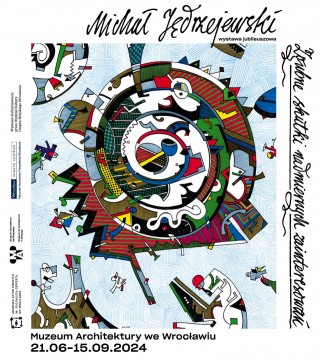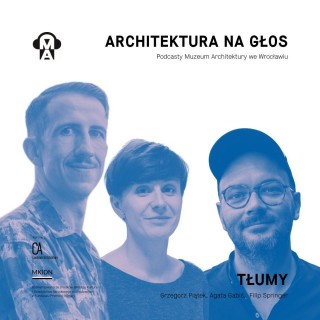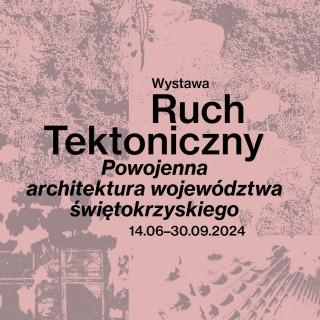LAPIDARIUM AND ROMANESQUE HALL
wystawa stała
The architectural details presented in the old Bernardine cloister are of Silesian provenance and originate mainly from Wrocław. Some of them come from buildings destroyed during World War II; others were found during archeological research. Although included into the collection in a random manner, they allow tracing the changes in the Silesian architectural sculpture from the 12th up to the 18th century.
The most valuable of the presented monuments is the Jaksa Tympanum (ca. 1160–1163) from the Benedictine Abbey in Ołbin.
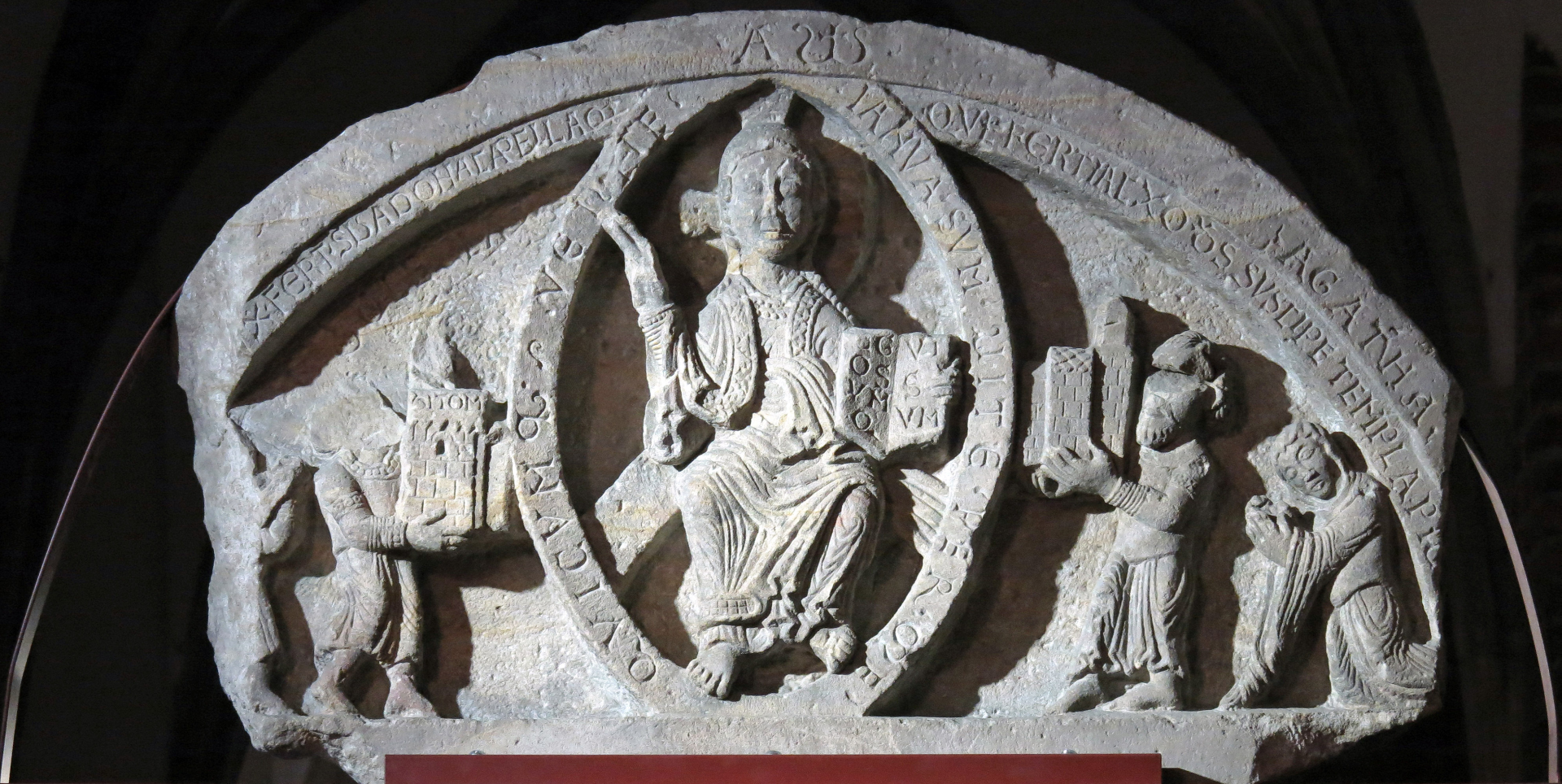
JAKSA TYMPANUM, sandstone, ca. 1160–1163, St. Michael the Archangel Chapel, Wrocław, Ołbin
The most interesting Gothic exhibits include elements of portals from Wrocław houses. Particularly worth mentioning are the 14th century tympanum with the Veil of Veronica, from the portal of the house at 16 Ofiar Oświęcimskich St., and the figure of Gabriel the Archangel, which is all that remains of the Annunciation scene once sculpted in its jambs. The butcher’s lintel (ca. 1500) from a house at 6 Odrzańska St., where a butchers’ guild tavern was located during the medieval period, and the double-arm arch portal from the Holy Spirit Hospital in Wrocław date back to the late Gothic phase. Also the keystones from the castle in Grodziec (Wendel Roskopf workshop, 1522–1524) testify to the high craftsmanship of medieval stonemasons.

FRAGMENT OF PORTAL WITH FIGURE OF A LION, sandstone, 14th century, “Under the Griffins” house, Wrocław, 2 Market Square
The Gothic architectural sculpture collection includes several pieces from the interiors of the Wrocław churches. Among them: the tracery and the cantilever with the figure of an angel (fragment of the lectorium) from the Blessed Virgin Mary Church on the Sand Island from ca. 1350–1360. Similarly dated is another cantilever with the angel figure coming probably from the old church of the Franciscan St. James’ Church. Among the 15th century monuments, the cantilever with the image of St. Paul from the unpreserved Holy Spirit Church, the portal from St. Agnes Church, and the keystones from St. Bernardine Church are worth mentioning.
A unique monument in the museum collection is the wooden Gothic sculpture of Christ Resurrected (second half of the 15th century) which comes from the Holy Sepulchre Hospital building in Wrocław. By the 1970s, it was placed on the hospital façade, where it is now replaced by a stone copy.
The collection of early modern stonework consists of varied architectural details that document the changing architectural style of Wrocław from the Renaissance, through Mannerism and Baroque, up to Classicism. Some of them come from non-existing buildings which nevertheless are very important for the history of Wrocław architecture. These include the early-Renaissance windowsill frieze from the house at 2 Łaciarska St. with the coats of arms of the Jenkwitz and Hirsch families, the Renaissance portal lintel from the building at 14 Wita Stwosza St., the mannerist corbels from the house “Under the Golden Palm” in the Market Square, or a fragment of pillar with bas-relief decoration from the house at 11 Łaciarska St. Among the 18th century monuments, a fragment of baroque railings dated 1727 from the choir of the Cathedral of Wrocław stands out. Other exhibits (capitals, fragments of portals, columns) remain anonymous – of unknown authorship and origin – yet still a valid certificate of historic architecture and the and skills of Wrocław craftsmen.

PORTAL CROWN WITH A COAT OF ARMS AND PORTRAITS OF THE FOUNDERS, sandstone, 1537, residential house, Wrocław, 14 Wita Stwosza St.
ROMANESQUE HALL
Presented relics of the Benedictine (since about 1190 – Premonstratensian) Abbey of Blessed Virgin Mary and St. Vincent in the Ołbin district of Wrocław, founded in the second quarter of the 12th century by the Silesian magnate and palatine, Piotr Włost, came from the blooming period of the Romanesque monumental architecture in Lower Silesia. The monastery was demolished in 1529 on the order of the Wrocław City Council, and the demolition material was used for construction of other buildings in the city. Based on the old drawings, graphics and descriptions as well as the results of archaeological research, the appearance of the abbey before its demolition has been reconstructed. Apart from monastery buildings grouped around several courtyards, it consisted of three churches: St. Michael the Archangel, All Saints, and the three-nave basilica of Blessed Virgin Mary and St. Vincent, that was the focal point of this architectural layout.
The massive cubic capitals – three of which can be seen in the exhibition – testify to the size of the edifice, in its time – one of the largest churches in the Polish territory. The buildings of the Ołbin Abbey had rich sculptural decoration. The details presented in the exhibition, in particular the Jaksa Tympanum exhibited in the lapidarium in the north cloister, belong to the most precious monuments of the Romanesque sculpture in Poland.
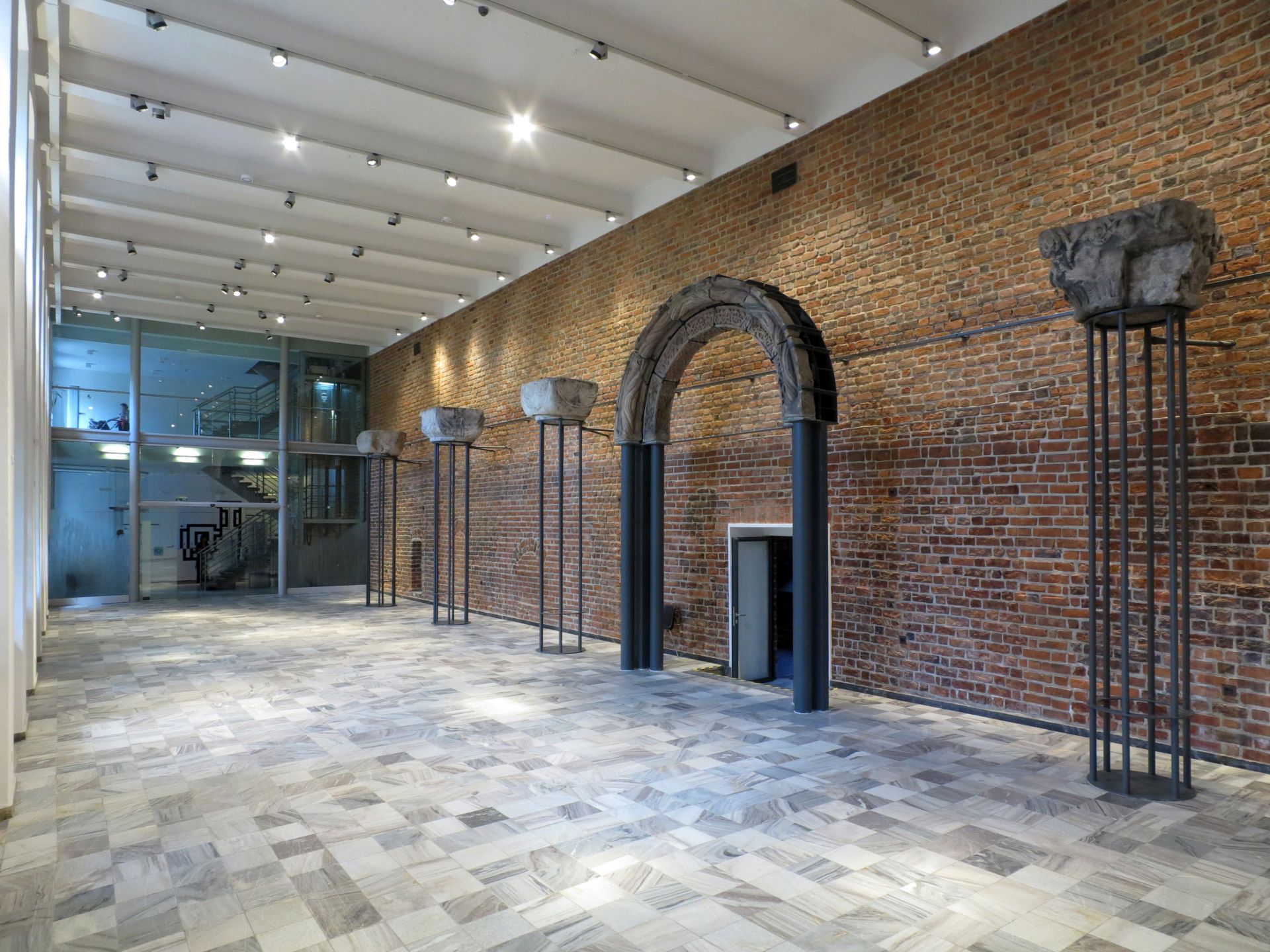
Piotr Włost and his wife Maria founded also the Canons Regular Abbey of Blessed Virgin Mary on the Sand Island in Wrocław. This 12th century temple was destroyed in the 14th century by the construction of a new Gothic church. Its remnant, presented on the exhibition, the twin base was originally the construction foundation of the gallery dedicated to the founder.
